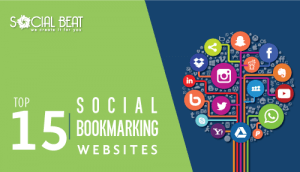In a space as dynamic as digital marketing where things change rapidly (Google, for example, updates its search algorithm 500 to 600 times a year), it is fairly difficult to predict with certainty how things will turn out in a year. Nevertheless, digital marketing is all about catching the best trends early and leveraging them. Here are eight key trends that we think would be ones to watch out for in 2016:
The mobile web will continue to grow rapidly
Mobile has already seen massive growth in 2014 and 2015. With Google announcing this year that mobile traffic has surpassed desktop traffic and also releasing its mobile-friendly update (Mobilegeddon), mobile-first has already gone from being a “nice to have” to an absolutely “must-have”. Also, despite the mobile web accounting for only 20% of the time spent on mobile (80% of the time spent is in apps), mobile browser traffic is twice the traffic from mobile apps. With mobile apps facing a massive challenge on the user retention front and the mobile web growing rapidly, mobile marketing strategy is where marketers are going to be strongly focused in 2016.
 Image Credit: Morgan Stanley
Image Credit: Morgan Stanley
Newer channels like Instagram will continue to gain rapid ground
With a large number of marketers swarming the three most popular social media marketing channels – Facebook, Twitter and LinkedIn (93% of marketers use Facebook!), there’s a great deal of competition for any audience you would want to target. Relatively new and upcoming channels like Instagram (only 36% of marketers currently use Instagram), Snapchat (a meagre 2% of marketers currently use Snapchat) and Periscope, on the other hand, are fairly untapped and unlike Facebook, have seen a growth in organic reach over the last few years, as illustrated below. Early adopters to these channels are already seeing results and adoption will continue gain ground in the year to come.

Influencer marketing will become mainstream
With organic reach of brand pages dropping across most channels, customers trusting social influencers more than brands and the growing use of ad blockers, influencer marketing seems to one of the most viable options for brands to reach out to their target consumers. The savvy early-adopter brands have already started adopting influencer marketing in 2015 and 2016 is when mass adoption will begin.
Spends on Programmatic buying and Real-Time-Bidding will rise
Programmatic buying uses the power of data to ensure the right kind of ads are served to the right kind of people in the most meaningful way, thereby increasing the effectiveness of the ads and the return on ad spends. An increasing number of advertisers are expected to allocate larger spends to programmatic in the next few years.

Video will explode:
Video is no newcomer to the digital space but its consumption trends have seen a massive bump in 2015, especially with Facebook allowing auto-play of videos in the newsfeed. An increasing number of brands will direct a larger percentage of their marketing spends towards creation and promotion of video content. If you haven’t embraced video as a marketer yet, the time is now!

Follower counts are dead, focus will be on ROI-driven marketing
With most social media channels cutting down on their organic reach, the concept of building a fan or follower base which a brand can reach out to for free is almost dead. Fan and follower counts have turned into pure vanity metrics with little business value. The focus in 2015 has already been on marketing that can drive direct return-on-investment in terms of measurable metrics like traffic and sales growth and this focus is only going to be stronger in 2016.
The popularity of Native Ads will increase
The popularity of ad blockers has seen a substantial increase in 2015 and Apple announced this year that its new mobile operating system, iOS 9 will allow ad blocking as well. In this scenario, native advertising, where ads merge into the platform on which they are displayed and do not seem outrightly promotional, is bound to see a huge spike in popularity. If you haven’t explored native advertising channels yet, now is the time to get started.

10X Content will be the new SEO
The focus of SEO has shifted from just keyword optimization and link building to not only producing quality content that addresses users’ needs but also delivering that content to the user with the best experience possible. Content is now the new SEO. But, with large swathes of content being generated every day, only content that is not just the best content out there, but 10 times the best, will stand out. Creating this 10X content is going to be the way forward in 2016.
What are the other trends that you think brands and marketers must pay close attention to in 2016? Do share them with us in the comments section below!






